Stella Atrium's Blog
August 26, 2022
Ready to Write Again
I caught myself making lists of words again. Is that your writing habit too? Words from novels I’m reading or from the mouths of news commentators, or from the little girl at the ice cream store. “Vanilla is so mundane.”
I’m a list-maker from way back, part of the reason I find teaching satisfying. Teaching is all about lists of students, lists of assignments, lists of who didn’t submit.
You can laugh. You know who else makes lists? Good cooks.
 Pinterest users want choices presented in groups of 4 or 7 or 12.Goodreads even has a category titled Listopia. Google is the king of list-making, but they call it ranking.Sports fans call their lists stats so they don’t appear domestic.Web designers are list makers, trying to draw order out of chaos. “Okay, everybody talks, but one at a time and 140 characters only!”
Pinterest users want choices presented in groups of 4 or 7 or 12.Goodreads even has a category titled Listopia. Google is the king of list-making, but they call it ranking.Sports fans call their lists stats so they don’t appear domestic.Web designers are list makers, trying to draw order out of chaos. “Okay, everybody talks, but one at a time and 140 characters only!”I also count things in groups, like the number of buds on a flowering plant, the number of steps I’m walking up, the number of exits from a room. People make fun of these habits, but they are my signals that I need to write again. They are part of the process.

I spent an eight month sprint learning how to self-publish. Then I was learning how to promote a published fantasy novel in a six-week drudge. So I haven’t written a CREATIVE word for nearly 10 months. The soul suffers; I laugh less. The creative urges spill out in other ways, though, mostly in bad habits.
What are your signals that you’re ready to write again?
** Making lists of words. We covered that.
** Making lists of names for characters: groups of names for clan members like Orin, Oria, Orthus. Roman, Romulus, Remus. Then changing the names slightly so they are mine – Omanni, Omulus, Reimus.
** The urge to buy writing materials. When I order notepads and pens, and a new desk blotter, that’s a sure signal that I’m ready for some creative writing. I search for those pens that write in several languages. When I opened a package to find a big sketchpad I had forgotten that I ordered, I had to chuckle. That’s for genealogy charts and topical maps, should the need arise.

** Then there are the white moments. I can remember waiting for a subway train after a long shift at a day job, and the essential scene for a story played out in my head, the characters stomping around and demanding attention. I pulled out a notepad and pen to scribble down the bits before memory betrayed me.
Of course, I no longer work a day job, or ride the train. Ah, the good old days.

** Then one afternoon, words become weighty, too unwieldy to shape a sentence. I cannot hear people talking or make sense of the prattle on the TV screen. That’s a sure signal that I need to seek solitude, the long hours spent alone with my ears plugged so I can exist in another world of characters.
Good thing I already bought that desk blotter.
What are your signals that you’re ready to write again? I’m making a list from your comments here.
August 7, 2022
Anti-Heroes in Hollywood Movies
I don’t watch Bill Maher much but, to his credit, he has spoken out for many years against violence in movies – for which he takes heat from woke fans. Maher links violence in movies to school shootings and cites these four stressors on the young culprits.
mental healtheasy access to gunssmartphones for kids to watch more newsviolence in moviesMaher uses the current buzzwords when talking about uber-corporations that are so politically correct that they reinforce pronoun use and “don’t say gay”. But the corporations don’t call for an end to the depiction of violence in Hollywood movies.

We mustn’t “platform bad things,” Maher says, but the formula of action movies is the anti-hero acting on a grudge. And the genre is everywhere.
Keanu Reeves – John WickTom Cruise – Jack ReacherRyan Reynolds – Six UndergroundRyan Gosling – Grey MenThe formula was refined after the success of the Jason Bourne series with Matt Damon and others. The plot is always the same. An orphaned kid in trouble with the law is recruited by an agent of the USA government to join an elite force. After a time of service, though, he sees through the veils and becomes a threat to bosses, so he must be eliminated. With skills he learned from them, the anti-hero evades the ever-present cameras and secures the evidence of wrong-doing while killing paid assassins, and some innocents, along the way. When the smoke clears, our hero has saved a pre-teen girl, so he’s good.
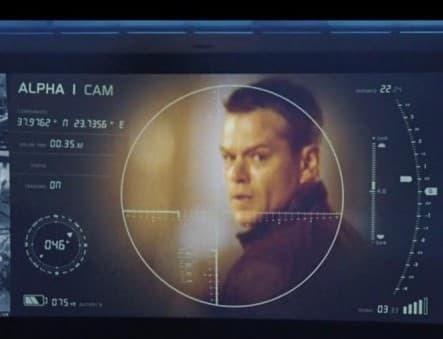
I have several gripes with this refined action movie genre.
The hero is never seriously hurt. As John Wick in some scenes, Keanu Reeves doesn’t even get blood spatter on his business suit.The hero is super-rich and can afford all the munitions he expends. This element is so impossible. When a person gets rich, after he has killed the roster of his personal enemies, the passion for vengeance fades and the hero starts to get fat, sending out a surrogate for the wet work. But no, our hero becomes an uber-avenger who takes on the next challenge, and the one after that.The trained assassins all know each other, having come up through similar channels of military or corporate security training. A loosely formed guild so they call each other by first name upon greeting. This is movie shorthand so intrusive backstories are not needed.The equipment always works. The command center that tracks the anti-hero for a street chase is integrated and never dumps when wifi is down. The bad guy is always from the parent organization. This element is so formula that I know who much die before the end of the first reel. Here’s a flaw – if the equipment sees everything, then how does the bad guy hide his nefarious acts? Duh.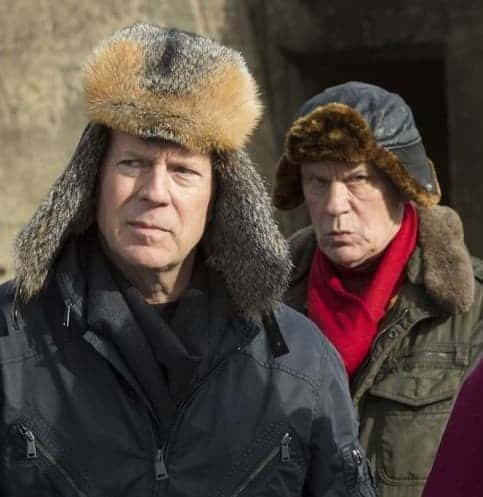
This action movie genre is refined from older versions, but at least the anti-hero in those movies from decades past could bleed and get it wrong sometimes. Mel Gibson played a suicidal cop, or a maimed road warrior, or a Scottish folk hero who was drawn and quartered.
Kevin Costner played bumbling fools and dropped his gun more than anybody.
Even Bruce Willis and John Malkovich, playing broad roles for laughs, were snookered by false information in the Red movies. But this new round of violent anti-heroes includes none of that broad humor, and precise little character humor.
I recently saw Ryan Gosling in Grey Men that follows the action movie formula exactly. The organization is after him as a threat to the people who trained him, so they hire a group of even meaner bad guys to eliminate him, led by Chris Evans. And Gosling saves a pre-teen girl along the way, so he’s good.
The producers knew they had a winner with Gosling’s too-cool-to-sweat demeanor, and they used the don’t-betray-me eyes behind the still face in the frozen stills for the movie credits.

I never like Gosling in softer roles like La-la Land where his reserve feels passive, but in Grey Men the same mannerisms read as restraint while even-badder-guys betrayed each other. And at least his character can be wounded.
Back to Bill Maher. One stressor he mentioned was smartphones for kids, so they can watch the news and takes sides on socially sanctioned issues. One real-life shooter – who can remember which event? – cited the end of Roe v Wade as his reason to shoot up the kids. Really? Hollywood movies banned smoking for heroes so kids don’t take up smoking, but movies (and now the news) have no impact on behavior?
The complexion of school shooters is changing. The level and reasons for street violence in the USA are changing. Fewer mentally ill lonely teen boys, and more older, ethnic, and gender-confused shooters who spout some garbled rhetoric about being victims of capitalism.
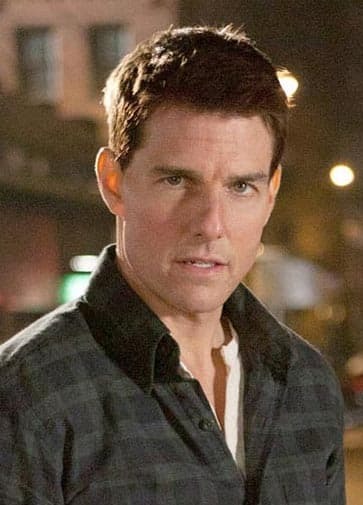
Here’s a thought… the woke culture claims that new arrivals crossing our borders at the rate of half a million a month are only seeking the American Dream. The violence they bring with them is because of the cartels and the desperate need in the Latin countries under socialism.
The workers crossing our borders are fed a steady diet of violent Hollywood movies, same as us. They have little education and no courses in civic duty. They are rootless and without families, in trouble with the law. Maybe street thugs excuse the violence as acting out the American Dream, more following Jack Reacher than Maverick Mitchell for how to get ahead in the USA.
The post Anti-Heroes in Hollywood Movies first appeared on Stella Atrium.
July 27, 2022
Waiting for Some Dragon Action
Do you describe movies to friends by “I really liked that moment when—“?
Eight long seasons of Game of Thrones recently played on daytime TV. We barely watched while doing daily chores, but waited for certain favorite moments to arrive. Each person in the work area was waiting for something different – a flash of nudity, the arena fights, the death of bad guys, the snappy banter (just kidding).
I was waiting for some dragon action. The series wasn’t interesting to me until the dragons were full-grown. Even then I worried about where they nested and how they bred more dragons.

Providing memorable moments is a writing tool that emerging writers can use in fantasy stories. Maybe the first character we meet snaps his fingers and produce a blue flame in the deep night. Of course, the writer needs a fully developed magic system so the moments fit into the otherworld for high-magic or low-magic.
High-magic is when most characters have magic and fight duels with their skills, like Darth Vader and the Emperor. High-magic stories are not my favorites because they remove the will of the protagonist for overcoming obstacles. Magic is used to win the day, so the protagonist sort of steps back.
Low-magic stories add value to the natural world without renting the fabric, like when Jesus caused the date tree to bare fruit. Keep magic on the sidelines and allow the humans (or hobgoblins or whatever) to drive the plot. Low-magic can fade into legend until there’s a need to boost the skills of a sidekick character. There are several does and don’ts, though.
.stk-294b306{margin-bottom:10px !important}Tips for using a high-magic system:
Don’t borrow – your protagonist cannot visit a Class-M planet or use a tricorder.
Don’t mix magic systems – a portal to another location doesn’t include time travel unless you’re Dr. Strange (borrowing again!).
Don’t mix modern and older conceits – the heroine cannot wear jeans and flip-flops unless you have described how she time-travels like Marty McFly.

Don’t violate the laws of physics – pushing natural effects like freezing the air is fine, but when Yoda died, he faded from sight ALONG WITH HIS CLOTHES.
Don’t planet hop without the passage of time – my biggest gripe with Star Wars was the battles on various planets, then the protagonist returns and the girl is still pregnant, just fatter. How much time was used with getting there and back?
Don’t develop so many terms or names that cannot be pronounced that the audible version becomes garbled. Think ahead.
Don’t expect high-magic to bring the plot resolution. Only the primary character can overcome adversity and save his ladylove.
.stk-e5be4c9{margin-bottom:11px !important}@media screen and (max-width:767px){.stk-e5be4c9{margin-bottom:7px !important}}Tips for using a low-magic system:
Conversely, there are several opportunities to use low-magic – charms or wards or hexes or spells or scripts – to the delight of the reader without overwhelming the plot. Special abilities like talking to birds or smelling the blood of orcs are great.
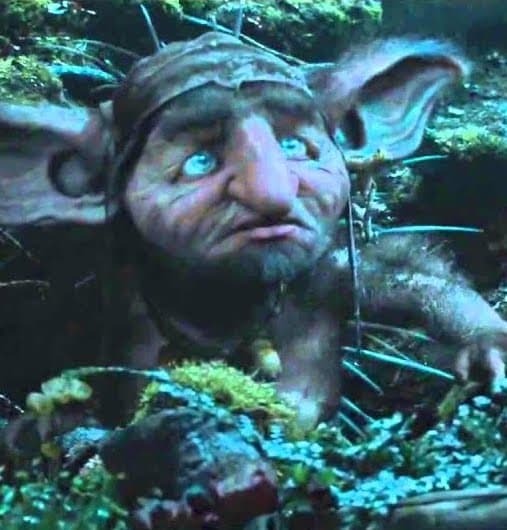
Do develop as system of magic that resides within the story’s vocabulary – use anecdotes as cautionary tales for who to avoid due to types of dark powers.
Do allow that magic has a cost – the practitioner maybe loses strength, or years are taken off his lifespan.
Do allow magic to go wrong – the outcomes are often the comic relief for the whole story.
Do ascribe magic powers to characters who don’t have them, just pretending.
Do have fun with new magic unique to your story – maybe research old myths or cultural tales for types of magic like a jinn or wendigo. Use home remedies like a divining rod to find water, or lye soap to prevent lice.
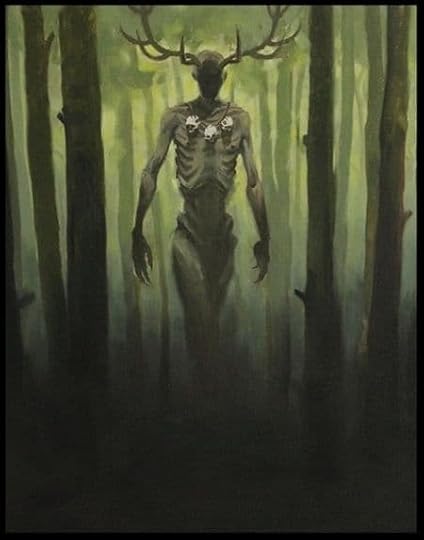
Do use a light touch with magic – some moments are throw-away, but some are woven into the story texture and become reasons to love a certain side character.
Do grow magic out of a misunderstanding of natural events – one character in a story that’s lost to me now thought that ice cream was so cold that it burned the tongue. Nice bit.
Do use chemistry or advancements in weapons – cinnabar becomes mercury when heated to remove the sulfur, and returns to cinnabar when sulfur is added again. Perhaps a similar effect can be found in your story, used to smuggle drugs in another form into the enemy camp.
Just some ideas to get you started. Sign up for the Stella Atrium Newsletter and don’t miss a single blog with tips for emerging fantasy writers.
The post Waiting for Some Dragon Action first appeared on Stella Atrium.
July 23, 2022
Unrequited Love is the Key
I recently read Kushiel’s Dart by Jacqueline Carey over several days – that’s one long story. (I’m late to the party, I know.) I was completely enamored with the well-drawn characters and descriptions of Europe before the 100 Year’s War. The politics for a game of thrones in tangent kingdoms were intricate and multi-various.
The pantheon of characters was easy to follow, and several women characters took prominent roles. The writing style found a rhythm that was comfortable and measured, leading the reader into delight of strange words from many languages.

Fan sites for Jacqueline Carey’s characters are often highly developed. I was green with jealousy.
I was shocked to find, though, that few fan sites provided a map of the territory or artist depictions of the weapons used by Jocelin or the many warriors with well-described fighting styles. Rather, fan pages focused on images of women with tattoos on their backs. Some showed famous actresses with (added) tattoos or smoldering looks under mussed hair. Kushiel’s Dart was narrated by a courtesan in a discipline of yielding, and the heroine (along with many others) decorated her body with a ‘marque’ or back tattoo that designates her status as indentured or free.

But what about the great writing, plotting, sense of history, shared languages, old myths, and plot surprises? I guess I’m an old fart. I enjoyed the aesthetic qualities of the writing style. Fans looked more to the fantasy of a dominant male and yielding lover who tolerates pain.
Oh, jeez…
How do we apply this revelation to our search for loyal fans? Online advisers for self-publishers encourage us to find our ‘fan base’ and go to where they congregate for promotions. But who and where are they?
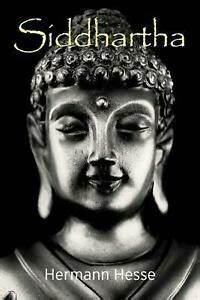
I read A Canticle of Lebowitz at age 18 and was swept away. Today I cannot find the appeal in the story. Like Siddhartha by Hermann Hesse, the Lebowitz story must be read at a certain age to display its magic. A reader must devour The Once and Future King before age 14, for example, or miss that opportunity to be enthralled with experiencing the world as a fish or a bird.
I read the The Shadow of the Torturer by Gene Wolfe at age 35 and read everything else he wrote within a year. Now the books on my shelf look like ashes of a bygone era.
For those of you who haven’t explored the canon for the fantasy genre, a likely comparison is the Shrek movies that are cartoons about known cartoon characters with slapstick humor and fart jokes – beloved by children everywhere. But the movies include in-jokes and adult references (that hopefully get past the kids) such as Pinocchio’s ability to make wood. The parents who took the kids to the movies also had a good time.

I love Shrek for breaking the mold of fainting princess and providing work for Fiona and her mother, along with the shrinking violet princess characters — compared to Disney’s cartoon for Beauty and the Beast that remains so stilted, I cannot sit through the full hour of its run-time.
But Shrek suffers from the same problem as all trilogies. When Shrek and Fiona are wed and start making babies, the sexual tension flows away. The introduction of Artie and the need to bring a new Prince Charming to FarFarAway revives the interest of young viewers, but not so much the parents.
Sexual tension keeps the fans engaged. You can write that in stone.
For fans of Old Hollywood, the tension between Humphrey Bogart and Lauren Bacall that made To Have and Have Not a box office hit was largely settled by the time Key Largo was shot four years later when they were an old married couple.
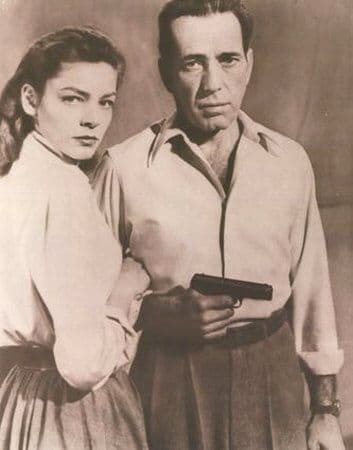
So… when I finished Kushiel’s Dart the ‘couple’ who leave the newly wedded king and queen to retire on a country estate don’t wed and make babies. The warrior sworn to her protection makes excuses that he cannot be her lover and her protector, choosing the latter to define his life.
I found the ending so unsatisfying because of the lack of resolution. But the lead character is a courtesan and barely eighteen. If she settles in, sexual tension flows away and there’s no need for a sequel (of which there are twelve).
Here we find the real problem of women as heroes. A female hero succeeds when she finds a protector while she goes about producing the next generation. A guy hero succeeds when he rides off into the sunset to the next adventure. No matter how well written for style, scholarship, pacing, plot, or level of diction – the fans of our stories ride along on a fantasy that resides in the hero’s (or heroine’s) unrequited love.
It’s the story of unrequited love that captures the fans.
Sign up for Stella Atrium’s Newsletter and don’t miss a blog post or news of upcoming fantasy books.
The post Unrequited Love is the Key first appeared on Stella Atrium.
July 20, 2022
There are Always Horses in Fantasy
We have been talking about elements of writing fantasy fiction. One item I noticed as consistent. No matter how extreme the otherworld appears, there are always horses.
Many fantasy stories have castles and magic and mean women, and a cook who used to be a woman warrior. However, no matter how exotic the wild animals or domesticated animals, horses are everywhere. In Dune there were no horses, but the hero learned to grab joyrides on the sand worms. That was unique.
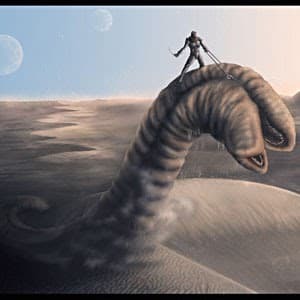
In Planet of the Apes, the apes that were soldiers rode horses. The apes had evolved, but not the horses. That was explained in the 2001 rendition with Mark Wahlberg that showed apes as former test subjects in the lab where horses were spared.
In Avatar the horses had six legs, but they were obviously horses, and less interesting than the banshees. Maybe the needed augmentation helped with carrying the oversized blue people.
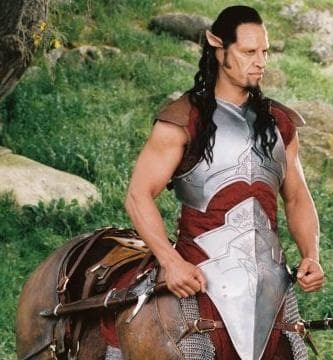
In Narnia, the horses could talk, but so could all the animals. The horse the oldest brother rode was a unicorn but did no fencing with this blade. Some of the fighters were centaurs — or men with horse parts below the waist. None of the centaurs were women, though. I noticed that.
In Alice (the one with Johnny Depp), the bad guy’s horse could talk. The white queen’s horse was just a prop, though, and I think she rode side-saddle. How antiquated was that?
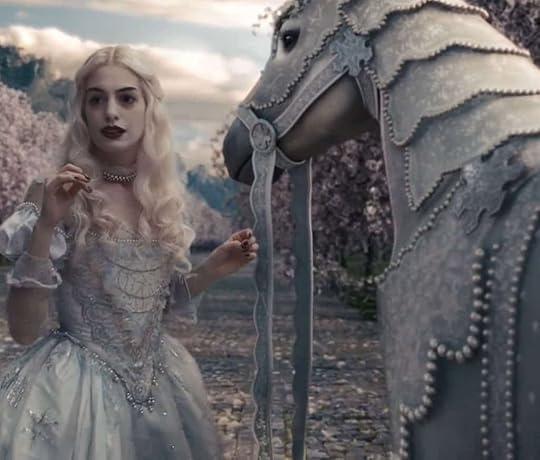
What other exceptions to the ever-present horse can you name for fantasy stories? Let’s discuss.
The post There are Always Horses in Fantasy first appeared on Stella Atrium.
July 16, 2022
Girl Heroes in Fantasy and Violence
So I was thinking about how female fantasy writers connect the girl-hero with violence. I was seeking a quote to start this blog entry, but I came up short.
Violence is the last refuge of the incompetent – Isaac AsimovViolence is the last resort of the ignorant – L. Ron HubbardBoth are a mis-reading of a post-war Pres. Roosevelt speech. I guess everybody borrows.

I like that we have chosen to empower women by giving the girl-hero choices and weapons and treasure and magic and the ability to talk to horses. These are exciting additions to her personal power, and I wish the stories had existed when I was young. (My comfort was A Wrinkle in Time where one of the travelers was a girl.)
I recently read a couple of trilogies in fantasy where the girl-hero wields a sword, leads an army, and grown men twice her age follow her. How is that possible?
In history, there was a queen named Matilda (we need a biopic here!!) who put Henry Plantagenet on the throne of England. But Matilda was a grown woman who took advantage in a fractured system where the heir apparent was weak, and the King of France had died leaving Eleanor (Henry’s wife) with a larger kingdom. Matilda’s victories on the battlefield were few.

Mostly these examples from history acted through diplomacy and deceit when the monarchy was weak. So where is the precedent for all the violence for girl-heroes in fantasy stories?
What girl kills without remorse? What 14-year-old kills a man who outweighs her by 80 pounds? And using a sword for which she has no training? So sometimes the girl-hero has more magic than the opponent’s magic. Sometimes she was trained in the use of poison to level the contest.
But that still leaves the kill stroke – the coup de gras.
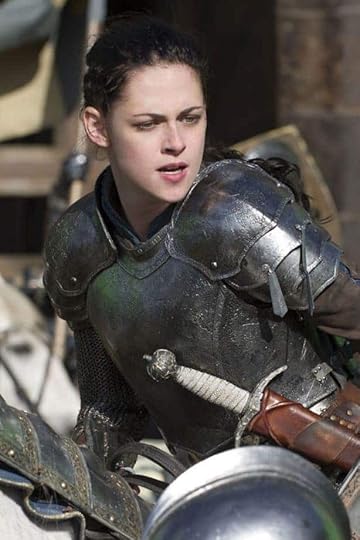
Why are we turning girl-heroes, first offered as liberating role models for our younger generation, into killing machines? When did this trend start?
.stk-6ee45ce{margin-bottom:11px !important}Types of Female Characters for Women Writers to Choose From:
So the three possibilities for female roles in fantasy are still warrior, princess/victim, or harlot – right? We have no better/different roles for women? Really? I can think of a few, but they depend on adding additional characters to the story. Listed are a few examples of character types:
Jealous sister like in the movie The BodyguardBuddies like in Thelma and LouiseFriend who turns on you like in BridesmaidsLong suffering steadfast friends like in Bridesmaids (hence the popularity)Narcissistic nemesis like in You AgainOverbearing boss like in Working GirlFriends bonded to improve conditions like in Nine to FiveFriends bonded by community like in Steel MagnoliasMentoring from an expert like in Bones on TVWhy do we never see these structures in fantasy stories? In real life, older women teach younger women. It seems that when a woman reaches age 40, she suddenly goes mute and the girls she mentored erase her name from history.

And another thing – I’m warmed up to it now!! A woman as the bad guy gets the short shrift. The male opponents are often deftly drawn with a back story for how they started down a dark road. But the female bad guys are usually stuck in the “Mirror, mirror, on the wall” musky old motif.
A bad guy thinks he is doing what’s best for the future, and he offers every justification for why he is right. A female bad guy never gets that speechifying moment to justify her choices before somebody throws a bucket of water on her.
Come on, ladies… We can do better than this.
Sign up for the Stella Atrium Newsletter and never miss a rant on writing girl-heroes in fantasy.
The post Girl Heroes in Fantasy and Violence first appeared on Stella Atrium.
July 14, 2022
Passing: a White Girl’s Movie Review
This Midwestern white girl has no business offering a review of Passing that’s about pressures of colorism in 1929 Harlem. I’m not the intended audience, except maybe I am. Passing is a teaching moment, perhaps, for white Americans who bought into the faltering idea that the election of President Obama started a post-race era.

At the premiere of Passing during Black History Month 2021, the writer/director Rebecca Hall talked about the ethnicity of her parents and grandparents. The relative degree of mixed blood for actors Tessa Thompson and Ruth Negga was also touted as relevant, like they were speaking to their ancestors through these roles. All this was broadcast in the name of breaking the color barrier for better roles in Hollywood. Good for them.
This white girl was aware of Tessa Thompson for her roles as a Valkyrie in Thor: Ragnarok and as Agent M in Men in Black: International, both opposite Chris Hemsworth in the title roles. The sharp edge of African American rhetoric doesn’t cling to her like it does to Viola Davis or Regina Hall. Tessa Thompson’s birth origins are no more relevant to the roles than the origins of Emma Thompson as Agent O.

In the first sequence of Passing, Irene Redfield (Thompson) enters white neighborhoods in NYC to purchase a toy for her son that’s not available in Harlem stores. She can pass for white by dressing correctly, down to the white gloves and the hat brim pulled close. Irene plays with danger by entering the Drayton Hotel solarium tea room to get cool on the blistering day. There she connects with Clare (Ruth Negga) who she knew in childhood and who is passing for sure, married to a white bigot who is unaware of her ruse (Alexander Skarsgard).
“I pulled it off,” Clare declares gleefully.
The visual styling and choice of monochrome for the cinematography places the action in an earlier decade and set of social constructs where real danger came from being in the wrong place for the wrong reasons. The mannerisms of the women feel practiced as though they are pretending, which they are. Clare speaks in the cadence of Olivia de Havilland, both clipped like a Brit and using round vowels like in the Old South.
The real surprise was when Irene returns to Harlem and uses these same mannerisms in her affluent real life, complete with an elegant row-house, doctor husband and two sons, and a housekeeper named Zulena (Ashley Wale Jenkins) who has much darker skin.
Clare invades the home with her vivacious and seductive manner, working her magic on black friends as easily as on her white husband. She’s seeking comfort from the danger of her life style choices, but has no trouble taking kudos for her light-skinned appeal, even creating a rift in Irene’s marriage.
Irene is the more interesting character with her ambivalence toward preferring whites, even proud of her connection with a white writer Hugh Wentworth (Bill Camp) who is slumming in Harlem and passing for straight. Safety is Irene’s big concern for her children, even promoting to her husband the idea of moving to South America where his doctor practice could land them a more comfortable place in the nearly feudal class system of Columbia, swapping class for race.
Irene is safe within her mannered choices, but she doesn’t feel safe. Visits from Clare upset her equilibrium, but also make her confront her own preferences on the continuum of colorism. And of course, Clare’s world collapses when her husband learns the truth, thereby increasing Irene’s yearning for safety.
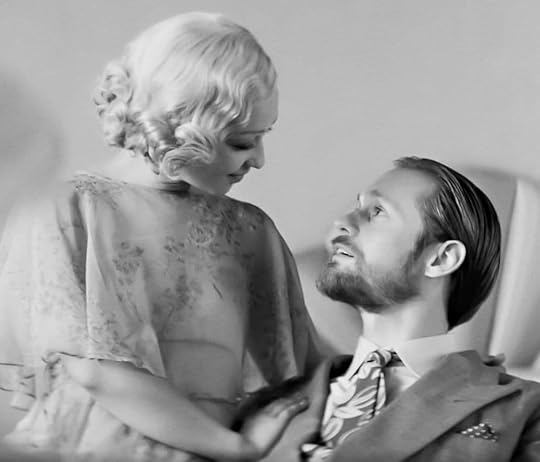
In my world, we tend to judge each other by who was smart enough to buy stock in Tesla and who got burned with Bitcoin. In my travels, I did see some prejudice over physical features among Greeks who talked about Turks and Armenians and Romanian gypsies in the harshest terms, but their wounds from local wars were only one-generation removed.
The big take-aways from this movie are questions of colorism and yearning to be white, or closer to the freedoms that whites take for granted, a repressive concern that black Americans impose on themselves. Like many Americans, I’m over my supposed white guilt. I’m just waiting for the trend of identity politics to burn itself out.
Sign up for Stella Atrium’s Newsletter to get the next review.
The post Passing: a White Girl’s Movie Review first appeared on Stella Atrium.
July 1, 2022
5 Mistakes with Dialogue: Emerging Writers
 @media screen and (min-width:768px){.stk-03e9d77{flex:1 1 calc(60% - var(--stk-column-gap,0px) * 1 / 2 ) !important}}.stk-d08dfcd{margin-bottom:17px !important}
@media screen and (min-width:768px){.stk-03e9d77{flex:1 1 calc(60% - var(--stk-column-gap,0px) * 1 / 2 ) !important}}.stk-d08dfcd{margin-bottom:17px !important}Novel writing can go through many stages. Some novels are dependent on descriptions of sword fights or encounters with winged creatures.
This discipline includes a specialized use of action verbs and a pantheon of fighting terms. The action often follows the fears of one participant and does NOT include much dialogue.
Working out interpersonal relations requires more subtle writing tools, often developed long after the writer gets to know her characters through action and a clearly developed plot. There is a later stage in developing the WIP where managing pacing, subtext, revelations, and exposed secrets becomes the daily writing challenge.
My encouragement is to address this later stage with a strong eye on inserting dialogue where scenes are currently summarized in the flow of the plot. Here are five areas that emerging writers often neglect in the final (or next to final) draft.
.stk-5fb6274{margin-bottom:12px !important}1. The primary character gets all the good lines
Secondary characters can add to the story by articulating the goals of the protagonists especially if she’s resistant to what she must get done. The side character can yell at the heroine that she’s failing, or tell her that her hidden goals are not so hidden, or even talk about how the heroine’s goals work against the needed action. The secondary character must have definition and an established voice when she steps forward with these answers, so don’t whizz past her in earlier scenes.
.stk-52376c8{margin-bottom:12px !important}.stk-386318e{margin-bottom:13px !important}2. Too much explaining of what we already know
Characters know each other and what happened before. They don’t explain to each other. Exposition must be added in bits and pieces, not in long history lessons.
.stk-e719699 .stk-img-wrapper{width:100% !important;height:280px !important} .stk-cf8279e{margin-bottom:12px !important}
.stk-cf8279e{margin-bottom:12px !important}One devise is to add a new member to the group who asks questions, so the secondary characters explain, from their own attitudes and commitment to the mission, what the outcomes are possible for good or bad. Then the writer establishes the backstory at the same time as defining characters.
.stk-336f202{margin-bottom:12px !important}3. The primary character keeps herself apart from engagement with others
The isolated girl is a popular trend, but girls mostly run in groups and confide to each other more than to the male characters. Give your protagonist a sister or BFF or cousin or auntie or mentor. Girls look to girls for reinforcement.
Guy characters always have a mentor who trains the protagonist. Girl characters only have these when they become lovers in a later sequence. That’s a loss.
.stk-3518a37{margin-bottom:12px !important}4. Too many summarized scenes where dialogue is better
Look for these summarized scenes throughout the WIP and commit to showing the obstacle through dialogue rather than through the protagonist’s inner thoughts. The scene will become immediate, active, showing the needs of several characters simultaneously, and rich with subtext.
Subtext is often added only in revision where the writer knows the hearts of her characters. Don’t be afraid to lengthen the story with these delicious scenes that can include silent communications, exposed secrets, layers of realism, and immediacy. Allow the reader to participate in a quiet moment where characters realize the journey they engaged together and impending failure.
.stk-65889d1{margin-bottom:13px !important}@media screen and (max-width:767px){.stk-65889d1{margin-bottom:10px !important}}.stk-4e4f769 .stk-img-wrapper{width:86% !important;height:485px !important}
5. The writer has more voices than her own (as narrator)
Give characters specific traits for articulation. One hesitates and backs into sentences with false starts from fear of rejection.
One character is judging and only speaks in the imperative, making demands like she’s a general. One doesn’t speak in group at all but comes around later to whisper her concerns. One is fatally loyal, while one is fatally resistant and a tattle-tale. Be consistent with each character. Assigning these character attitudes toward the world is as important as assigning height and eye color.

Bookmark this blog for future free advice on using dialogue in prose. Sign up for the newsletter to never miss a blog post.
The post 5 Mistakes with Dialogue: Emerging Writers first appeared on Stella Atrium.
Gertrude Bell Deserves Better
 @media screen and (min-width:768px){.stk-03e9d77{flex:1 1 calc(60% - var(--stk-column-gap,0px) * 1 / 2 ) !important}}.stk-d08dfcd{margin-bottom:17px !important}
@media screen and (min-width:768px){.stk-03e9d77{flex:1 1 calc(60% - var(--stk-column-gap,0px) * 1 / 2 ) !important}}.stk-d08dfcd{margin-bottom:17px !important}When Queen of the Desert came out, a story about the Middle East adventurer Gertrude Bell, I was eager to see how the character was handled. So disappointed. The fault isn’t all on Kidman but on the director Werner Herzog, a once-brilliant director doing a final major film. Herzog presents the character as a Victorian lady trapped in the mannerisms of the age, a great disservice to Bell.
**Spoiler Alert**
.stk-4167adb{margin-bottom:12px !important}Nicole Kidman has been in some great movies, and some awful ones. Who can forget Rabbit Hole? It’s hard for me to be critical since I suspect my urge is from jealousy. Her boy toy is Keith Urban, and who can beat that?
.stk-3eb187e{margin-bottom:12px !important}@media screen and (max-width:767px){.stk-3eb187e{margin-bottom:10px !important}}But… there was all this fainting and sighing and appealing to men on the basis of her connections with uncles in the British military, rather than Bell’s own talents with language, map-making, respect from colleagues, and stamina in a difficult climate. If Kidman caught her breath in fake surprise one more time, I was going to end my subscription to NetFlix.
.stk-52376c8{margin-bottom:12px !important}So what’s the truth, and why was it discarded?
.stk-e719699 .stk-img-wrapper{width:60% !important;height:280px !important}@media screen and (max-width:767px){.stk-e719699 .stk-img-wrapper{width:null% !important;height:nullpx !important}}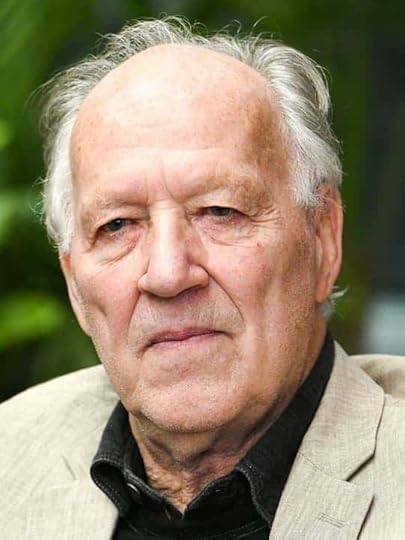 .stk-5c56585{margin-bottom:12px !important}
.stk-5c56585{margin-bottom:12px !important}Gertrude Bell was an affluent woman born into Victorian society in 1868. Her uncle was Frank Lascelles, the British Minister at Tehran, Persia (Iran) from 1892-94.
.stk-5c56585{margin-bottom:12px !important}Her own credits include writing several books about the Middle East, developing maps of the region used by the British military, mastering the many dialects of tribal leaders – well enough that she was invited to take tea with them in the villages.
.stk-d088356{margin-bottom:12px !important}Early on, she lived in Cairo and worked at the Arab Bureau under General Gilbert Clayton. She worked with the Red Cross and led expeditions into danger zones due to alliance she had developed with Arab groups of Shia, Sunni, and Kurds. She protested the Armenian genocide by Turkish forces. She knew Lawrence of Arabia in the tribal lands and Winston Churchill in the seat of power. Maps she had developed were used to create the boundaries of the British Mandate that demarcated the present day countries and gave Saudi Arabia to Faisal bin Hussein – for better or worse.
.stk-65889d1{margin-bottom:13px !important}@media screen and (max-width:767px){.stk-65889d1{margin-bottom:10px !important}}.stk-4e4f769 .stk-img-wrapper{width:86% !important;height:485px !important}
She wrote more books while living in Beirut and Antioch in 1907, and in Damascus and Baghdad in 1913, committed to the region and helping the tribes who called her al-Khatun, or queen.
But Herzog presents Gertrude Bell as a fainting ingénue who pines after this lover or that one, played by James Franco and Damian Lewis, both treating her as decorative with no reference to her considerable skills. Her journeys into the desert were side issues with no outcomes.
My question is why did Nicole Kidman (and producer Ridley Scott) go along with the script and this portrayal? When did Kidman stand up to the powers-that-be and demand a more truthful version? What would Bette Davis have done with this role?
Whatever. We get a fresh version of Pride and Prejudice every year, so why not a truthful account of this unconventional woman and her many accomplishments? In our era of identity politics, is Gertrude Bell an embarrassment to the British Empire?
The post Gertrude Bell Deserves Better first appeared on Stella Atrium.
June 25, 2022
7 Writer Tips: Characters in Conflict
When I was a student of writing at the School of Art Institute of Chicago, my friend there was a visual artist, mostly a painter. I remember she got lost in the art store fingering the brushes and testing the tubes of color. She mooned over canvases of different textures. She took a clay-modeling class to learn to visualize objects in depth. These were the tools of her trade that she examined and experimented with and combined and recombined to gain unique effects.
.stk-90da6fc{margin-bottom:12px !important}@media screen and (max-width:1023px){.stk-90da6fc{margin-bottom:8px !important}}@media screen and (min-width:768px){.stk-4f214ce{flex:1 1 calc(44.9% - var(--stk-column-gap,0px) * 1 / 2 ) !important}} @media screen and (min-width:768px){.stk-9c420cb{flex:1 1 calc(55.1% - var(--stk-column-gap,0px) * 1 / 2 ) !important}}@media screen and (max-width:1023px){.stk-520c15b{margin-bottom:7px !important}}
@media screen and (min-width:768px){.stk-9c420cb{flex:1 1 calc(55.1% - var(--stk-column-gap,0px) * 1 / 2 ) !important}}@media screen and (max-width:1023px){.stk-520c15b{margin-bottom:7px !important}}Writers have many tools for experimentation: inner thoughts, descriptions of sword fights, worlds-building, emotion in subtext, and many more including dialogue.
@media screen and (max-width:1023px){.stk-c94af7a{margin-bottom:9px !important}}My playwriting students don’t see the need for the class exercises since they will not mount a production for the play. I tell them that the skills they gain will inform their prose writing by putting the characters in the moment and in conflict.
And how is that done?
Playwrights remove all the exposition –the explaining by the writer – leaving only words and gestures of characters on a single set piece that doesn’t change for the camera angle. Prose writers get frustrated to the extreme because the voice they have developed is their own as the narrator. That voice is silenced in stage plays. “But how will the audience know?” my students ask.
.stk-e5657e0{margin-bottom:8px !important}1. Create a setup that’s obvious without words
A mother and young son sit in a restaurant booth with too much luggage pushed in beside them. The boy is eating pie and the mother has only coffee while she studies a roadmap spread on her side of the table. A Greyhound bus pulls by outside the window.
.stk-d3b99a6{margin-bottom:12px !important}@media screen and (min-width:768px){.stk-fe36177{flex:1 1 calc(60.8% - var(--stk-column-gap,0px) * 1 / 2 ) !important}}.stk-ce9bb3e{margin-bottom:10px !important}2. Remember that there’s no single POV character
The mother counts out her bills and change. A man approaches to offer a hand-out from charity but is rebuffed from suspicion. He takes insult and calls her a hard name. The son stands and kicks his shin. The waitress must stop the boy to keep order in her section.
3. All characters have needs, fears, frustrations
The man is genuine in his charity without seeing the insult. The mother is over-protective. The son feels exposed and acts out. The waitress fears her job is at risk.
@media screen and (min-width:768px){.stk-3febd49{flex:1 1 calc(39.2% - var(--stk-column-gap,0px) * 1 / 2 ) !important}}.stk-e30c973 .stk-img-wrapper{width:80% !important;height:318px !important} .stk-69c8b7a{margin-bottom:8px !important}@media screen and (max-width:1023px){.stk-69c8b7a{margin-bottom:7px !important}}
.stk-69c8b7a{margin-bottom:8px !important}@media screen and (max-width:1023px){.stk-69c8b7a{margin-bottom:7px !important}}4. Characters speak out their demands – in their own voices
Hesitation, indifference, fear, misdirected angry outbursts from old hurts can all play into the obstacles that the characters present to each other. Some back down; some don’t. Use the declarative voice and imperative demands. Short demanding sentences with some repeating of phrases for emphasis.
.stk-434fc91{margin-bottom:8px !important}@media screen and (min-width:768px){.stk-b35d547{flex:1 1 calc(50% - var(--stk-column-gap,0px) * 1 / 2 ) !important}}.stk-8ed693e .stk-img-wrapper{width:99% !important;height:257px !important} @media screen and (min-width:768px){.stk-5994968{flex:1 1 calc(50% - var(--stk-column-gap,0px) * 1 / 2 ) !important}}.stk-a7b1e72{margin-bottom:7px !important}
@media screen and (min-width:768px){.stk-5994968{flex:1 1 calc(50% - var(--stk-column-gap,0px) * 1 / 2 ) !important}}.stk-a7b1e72{margin-bottom:7px !important}5. Silences in dialogue are good
Silences (hesitations while a character chooses) allow the audience to catch up with the characters and anticipate what may happen next. Keep them guessing with pacing and offering several possibilities for outcomes.
6. Action happens in real time
The audience is engaged with what happens next, not what happened when the generous man was a child himself. Don’t slow the action with long anecdotes of yester-year – unless you have the needed room trying to fill a seven-season series.
.stk-ad026d5{margin-bottom:9px !important}@media screen and (max-width:1023px){.stk-ad026d5{margin-bottom:5px !important}}7. Resolution is organic
Not everybody gets what she wants, but everybody grows or learns something, if only to leave suffering people to their own thoughts.
My students who embrace the lessons of writing dialogue are often amazed at how the exercises push the writer into the immediacy of the scene, standing in the shoes of each character, to bring the moments alive for the writer — and the reader.
.stk-8cc6af7{margin-bottom:8px !important}@media screen and (min-width:768px){.stk-e7b6038{flex:1 1 calc(38% - var(--stk-column-gap,0px) * 1 / 2 ) !important}}.stk-a49933c .stk-img-wrapper{width:59% !important;height:167px !important}@media screen and (max-width:1023px){.stk-a49933c .stk-img-wrapper{width:95% !important;height:200px !important}} @media screen and (min-width:768px){.stk-1f0de7e{flex:1 1 calc(62% - var(--stk-column-gap,0px) * 1 / 2 ) !important}}
@media screen and (min-width:768px){.stk-1f0de7e{flex:1 1 calc(62% - var(--stk-column-gap,0px) * 1 / 2 ) !important}}I add in-line edits for bad habits with dialogue too. We will look at each of these problems in later discussions.
Too wordyToo formalToo sure-fireToo much explainingToo nice.stk-1b57a51{margin-bottom:12px !important}Sign up for Stella Atrium’s Monthly Newsletter so you don’t miss these writer tools gained from years of teaching how to show character through dialogue.
The post 7 Writer Tips: Characters in Conflict first appeared on Stella Atrium.



